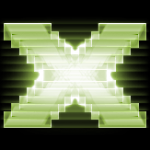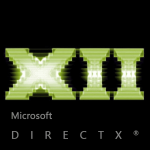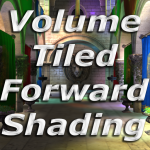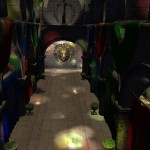In this lesson, you learn how to load textures into your DirectX 12 powered applications. You learn how to use the compute pipeline to generate mipmaps for textures. You also learn about texture samplers and how to specify a texture sampler in the root signature. A texture sampler is used to control how the texels are read in a shader.
Category Archives: DirectX
Learning DirectX 12 – Lesson 3 – Framework
In this tutorial, you will be introduced to several classes that will help you to create a robust and flexible framework for building DirectX 12 applications. Some of the problems that are solved with the classes introduced in this lesson are managing CPU descriptors, copying CPU descriptors to GPU visible descriptor heaps, managing resource state across multiple threads, and uploading dynamic buffer data to the GPU. To automatically manage the state and descriptors for resources, a custom command list class is also provided.
Learning DirectX 12 – Lesson 2 – Rendering
This is the second lesson in a series of lessons to teach you how to create a DirectX 12 powered application from scratch. In this lesson, vertex and index data is uploaded to the Graphics Processing Unit (GPU) for rendering. Basic vertex and pixel shaders are described and how to create a Pipeline State Object (PSO) that utilizes those shaders is also described. A root signature defines the parameters that are used by the stages of the rendering pipeline. In this lesson a simple root signature is created that defines a single constant buffer that contains the Model-View-Projection (MVP) matrix that is used to rotate a model in the scene.
Learning DirectX 12 – Lesson 1 – Initialize DirectX 12
This is the first lesson in a series of lessons to teach you how to create a DirectX 12 application from scratch. In this lesson, you will learn how to query for DirectX 12 capable display adapters that are available, create a DirectX 12 device, create a swap-chain, and you will also learn how to present the swap chain back buffer to the screen. In this lesson, you will also create a command queue and a command list and learn how to synchronize the CPU and GPU operations in order to correctly implement N-buffered rendering.
Volume Tiled Forward Shading
In this post, Volume Tiled Forward Shading rendering is described. Volume Tiled Forward Shading is based on Tiled and Clustered Forward Shading described by Ola Olsson et. al. [13][20]. Similar to Clustered Shading, Volume Tiled Forward Shading builds a 3D grid of volume tiles (clusters) and assigns the lights in the scene to the volumes tiles. Only the lights that are intersecting with the volume tile for the current pixel need to be considered during shading. By sorting the lights into volume tiles, the performance of the shading stage can be greatly improved. By building a Bounding Volume Hierarchy (BVH) over the lights in the scene, the performance of the light assignment to tiles phase can also be improved. The Volume Tiled Forward Shading technique combined with the BVH optimization allows for millions of light sources to be active in the scene.
Forward vs Deferred vs Forward+ Rendering with DirectX 11
In this article, I will analyze and compare three rendering algorithms:
- Forward Rendering
- Deferred Shading
- Forward+ (Tiled Forward Rendering)
Texturing and Lighting in DirectX 11
Introduction to DirectX 11
In this article, I will introduce the reader to DirectX 11. We will create a simple demo application that can be used to create more complex DirectX examples and demos. After reading this article, you should be able to create a DirectX application and render geometry using a simple vertex shader and pixel shader.
Introduction to DirectX 9 for Game Programmers

DirectX
In this article I will give a quick introduction to DirectX. I will use Visual Studio 2008 as a development environment for this tutorial and I will start by showing how to install DirectX and configure Visual Studio 2008 to start developing DirectX applications. I assume that the reader has basic programming knowledge in C++. If you require a math refresher, you can refer to my “3D Math Primer” articles on Coordinate Spaces, Vector Operations, and Matrices.




